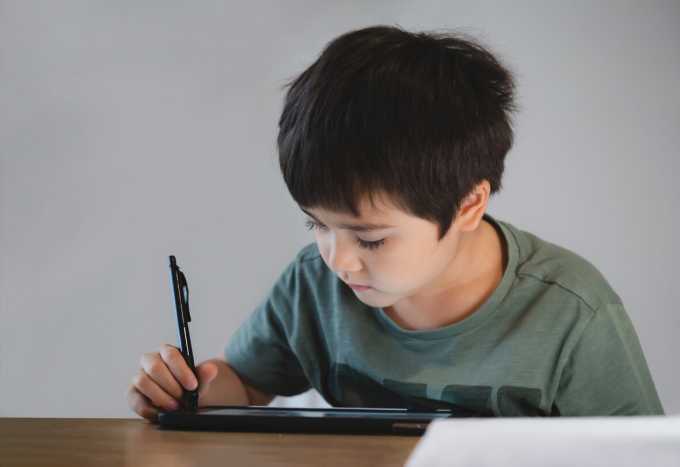In order to decrease problematic behavior and, instead, implement positive behavior in children, they need to be positive reinforcement examples to be motivated. The main purpose of positive reinforcement and negative reinforcement is to changing behavior of the child with various stimuli. It is important to note that developing efficient continuous positive reinforcement systems is an important practice for both special education and social learning, and efficient in gaining practice. However, finding the right positive reinforcer is crucial. Any stimulus that positively affects the child can be positive reinforcer. But rewarding your child with materials like toys, chocolate and candy or food would be harmful in the long term. To find the right rewards system and desirable response, behaviors, their reasons, and occurrence process should thoroughly be analyzed.
Behavior Analysis Before Choosing Positive Reinforcement Method
While analyzing problematic behaviors, antecedents of behavior, its reasons and factors that affect them should be taken into consideration. For this, Applied Behavior Analysis (ABA therapy) should be utilized. The goal of this analysis is to collect data on problematic behavior] of children, determine their antecedents, and work on to change those problem behaviors.
 There may be many reasons involved in problematic behavior. Some antecedents such as negativity in family environment, negative relations with family members, physical and cultural environment at special education school, negative or indifferent behavior of teacher, bad influence of mass media on children cause repetitive negative behavior happen. To choose a reinforcer, first the reason of behavior should be determined.
There may be many reasons involved in problematic behavior. Some antecedents such as negativity in family environment, negative relations with family members, physical and cultural environment at special education school, negative or indifferent behavior of teacher, bad influence of mass media on children cause repetitive negative behavior happen. To choose a reinforcer, first the reason of behavior should be determined.
What to Consider While Choosing Positive Reinforcers?
Reinforcement method is pretty similar to reward-punishment practice. However, “punishment” here definitely does not indicate applications that make psychological or physical harm to the child. Although this type of negative punishment application suppresses problematic behavior in the short term, it may cause the behavior to come back more severe and traumatic other than the desirable response. Thus, the right operant conditioning methods are negative reinforcement or using positive punisher. While the teachers practice negative punishment, they should definitely not apply violence, practice anything physical or psychological that may frighten the children. Otherwise the child may have various traumas during his life time. Although this temporarily keeps down the problematic behavior, it will badly affect child’s psychological development and prevent him from acquiring skills.
Rewards Systems For Positive Reinforcement and Negative Reinforcement
Reward-punishment system should be applied by finding a stimulus that motivates the child. When the child acts towards changing problematic behavior and shows positive behavior, any stimulus can be provided to reward him. Stimuli like chocolate, juice, candy can be used time to time, but they should not be used often. The punishment should be depriving the child of these stimuli.
Positive reinforcement system is based on operant conditioning. The goal here is to condition the child positively and this way determine his behavior. Stimulus can be chosen by analyzing negative behavior of the child and determining its occurrence and antecedents. Selection of reinforcers should be carried out cautiously. In some cases, consulting to a pedagogue might be necessary.
Example of Positive Reinforcement Types:
1. Primary Positive Reinforcement Examples:
Vital needs are considered as primary reinforcement examples. Stimuli like temperature, sleep, air, water, food are primary reinforcers. These reinforcers should not be used unless necessary. As stated above, punishment should be the absence of positive stimuli. However depriving the child of his basic needs like water, food or sleep would have negative effects. Food like soda, chocolate, candy can be used as primary reinforcers. But these nutrition should be used carefully. For instance, in behavioral modification process they could be used in certain and important milestones, rather than on every positive reinforcement practice. It is important to remember that over consumption of these materials might badly affect the child’s mental health and may be addictive if used during the full process of changing behavior process.
2. Secondary Positive Reinforcement Examples:
Secondary positive reinforcement examples are positive reinforcers that have acquired their function as a reinforcer after pairing with a stimulus that functions as a positive reinforcer. The child, whose desired behavior to be changed, is stimulated with not his basic needs, but with elements known as secondary needs. Secondary positive reinforcement examples are used to correct problematic behavior. Because these positive reinforcers are controllable, can be used on every age group and do not create satisfaction or dissatisfaction like primary positive reinforcers. There are four types of secondary positive reinforcement examples called social, objective, activity and symbol reinforcers.
- Social Reinforcers: Paying attention to the child, making contact, using positive reinforcement and motivating words, hugging, kissing, and showing reactions that motivates the child can be considered social reinforcers. When used in the right place and time, it might show the desired effect. Children expect praise when they make effort towards changing their negative behavior. Praise positively motivates them and make them continue showing the right behavior. While practicing social reinforcers, the tone of voice, gestures and facial expressions should be coherent and convincing.
- Objective Reinforcers: Social reinforcers may not always have the desirable effect on behaviors of children. Because most of the time children need bigger intrinsic motivation. Also, social and activity reinforcers do not really work on children with autism and individuals with low and mild level mental disability. Thus, objective reinforcers may need to be used. As reinforcers, cloths, books, pictures, toys, and other objects that the child likes can be used.
- Activity Reinforcers: For these reinforcers, favorite activities of children should be used as stimuli. For instance, the child can be told that he could go the park or play video games upon expressing desired behavior. This way he will be positively motivated and show the specific behaviors. However, this will not be effective on children who play video games or go the park every day. The stimulus here should be something that attracts the child, something he will like and doesn’t do every day. There are things to consider while using activity reinforcers. Increasing the time spent on technological devices like computer, television, tablet may be harmful for children. Excessive use of technological devices should be avoided.
- Symbol Reinforcers: These reinforcers include materials that by themselves are not effective unless they are used with other reinforcers. This method is mostly effective. It is one of the methods that ensures continuity. Here, the child is given materials like star, card or token and when he collects specific amount of these items, he is given a social or activity reinforcer. Suppose that the child is given permission to go to the park if he collects ten tokens; he would exhibit certain behaviors to go to the park. And if five tokens are taken back for each problematic behavior like yelling or hitting, the child will continue to show positive behavior to compensate and avoid problematic behaviors. A scoring system can also be used for literate children.
Sources:
- Example of positive reinforcement & Gaining specific behaviors: https://www.verywellmind.com/what-is-positive-reinforcement-2795412
- Continous Reinforcement with Applied Behavior Analysis:




